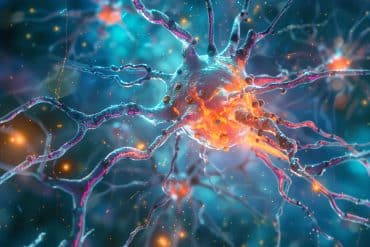Summary: Researchers report on the neurological benefits of talking a walk.
Source: Experimental Biology 2017.
Researchers show that foot’s impact helps control, increase the amount of blood sent to the brain.
You probably know that walking does your body good, but it’s not just your heart and muscles that benefit. Researchers at New Mexico Highlands University (NMHU) found that the foot’s impact during walking sends pressure waves through the arteries that significantly modify and can increase the supply of blood to the brain. The research will be presented today at the APS annual meeting at Experimental Biology 2017 in Chicago.
Until recently, the blood supply to the brain (cerebral blood flow or CBF) was thought to be involuntarily regulated by the body and relatively unaffected by changes in the blood pressure caused by exercise or exertion. The NMHU research team and others previously found that the foot’s impact during running (4-5 G-forces) caused significant impact-related retrograde (backward-flowing) waves through the arteries that sync with the heart rate and stride rate to dynamically regulate blood circulation to the brain.
In the current study, the research team used non-invasive ultrasound to measure internal carotid artery blood velocity waves and arterial diameters to calculate hemispheric CBF to both sides of the brain of 12 healthy young adults during standing upright rest and steady walking (1 meter/second). The researchers found that though there is lighter foot impact associated with walking compared with running, walking still produces larger pressure waves in the body that significantly increase blood flow to the brain. While the effects of walking on CBF were less dramatic than those caused by running, they were greater than the effects seen during cycling, which involves no foot impact at all.
“New data now strongly suggest that brain blood flow is very dynamic and depends directly on cyclic aortic pressures that interact with retrograde pressure pulses from foot impacts,” the researchers wrote. “There is a continuum of hemodynamic effects on human brain blood flow within pedaling, walking and running. Speculatively, these activities may optimize brain perfusion, function, and overall sense of wellbeing during exercise.”

“What is surprising is that it took so long for us to finally measure these obvious hydraulic effects on cerebral blood flow,” first author Ernest Greene explained. “There is an optimizing rhythm between brain blood flow and ambulating. Stride rates and their foot impacts are within the range of our normal heart rates (about 120/minute) when we are briskly moving along.”
Source: Stacy Brooks – Experimental Biology 2017
Image Source: NeuroscienceNews.com image is in the public domain.
Original Research: The study will be presented at the Experimental Biology 2017 conference in Chicago between April 22 – 26.
[cbtabs][cbtab title=”MLA”]Experimental Biology 2017 “How Walking Benefits the Brain.” NeuroscienceNews. NeuroscienceNews, 24 April 2017.
<https://neurosciencenews.com/neurobiology-walking-6487/>.[/cbtab][cbtab title=”APA”]Experimental Biology 2017 (2017, April 24). How Walking Benefits the Braine. NeuroscienceNew. Retrieved April 24, 2017 from https://neurosciencenews.com/neurobiology-walking-6487/[/cbtab][cbtab title=”Chicago”]Experimental Biology 2017 “How Walking Benefits the Brain.” https://neurosciencenews.com/neurobiology-walking-6487/ (accessed April 24, 2017).[/cbtab][/cbtabs]






